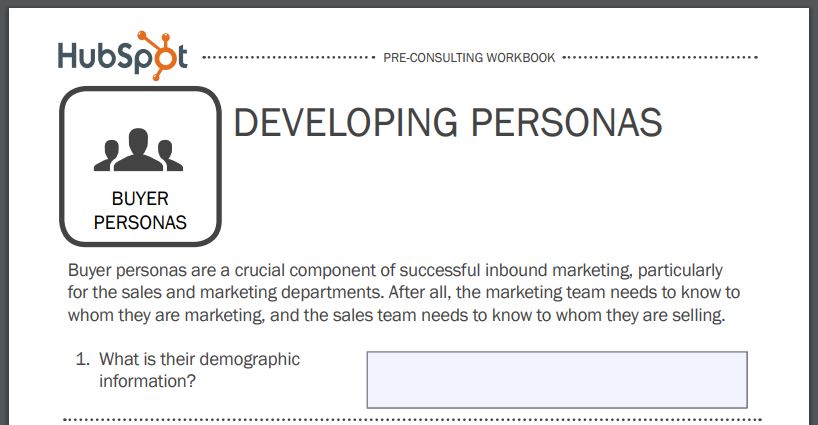
The basis of Inbound Marketing is to get customers to come to you rather than the other way around. A number of successful companies use inbound marketing to attract and close customers. Even if you’re not familiar with Inbound Marketing strategies, you probably experienced an inbound strategy within the last 5 minutes that brought you to this very blog post. How, you ask? The answer lies in the actions that led you here.
Did you find this blog post by…
…searching the web for something about inbound marketing?
…clicking a link in our weekly blog email?
…seeing a post on our social media that caught your eye, causing you to follow the link?
If you answered “Yes” to any of the above ways of finding this blog post, our inbound marketing efforts are working! 🎉
Using inbound methodologies means researching the habits and needs of your ideal customers and then basing your marketing strategies on that information and research. Whether you’re considering inbound marketing or you’re already in the thick of it with your marketing strategy, we have some insider details about the importance of inbound and how to set yourself up for success according to your business goals.
Traditional Marketing vs. Inbound Marketing
To get full value from an inbound marketing campaign or strategy, it’s important to first understand and buy-in to the methodology. For quick reference, Wikipedia has the following description of inbound marketing: “while outbound marketing is going to push the product through various channels, inbound marketing creates awareness, attracts and helps new customers with channels like blogs, social media, direct mail etc.”The concept of inbound is fairly new compared to those traditional marketing channels, like radio and television commercials or even pop-up ads on the Internet. HubSpot defines inbound marketing as “a holisitic, data-driven approach to marketing that attracts individuals to your brand and converts them into lasting customers.” To help explain the difference between traditional and inbound marketing, let’s take a look at some tactics Campbell’s Soup might use for each of these marketing methods.
Traditional marketing example
In traditional marketing, Campbell’s Soup might air a television ad during a family-friendly TV show portraying how wonderful, great, tasty, and affordable Campbell’s Soup is.
Traditional marketing strategies are interruptive, like a commercial break from your television program — an advertisement disrupts your experience to sell you a product.
Inbound marketing example
Using inbound marketing, Campbell’s Soup might create online versions of recipes, such as “Easy Chicken Pot Pie” or “Cheesy Chicken & Potato Casserole”. Users looking for dinner ideas find these recipes by searching the Internet, social media, or other sources online. Realizing they like the look of a few of the meals and seeing that Campbell’s Soup is one of the ingredients, customers add Campbell’s Soup to their grocery list or shopping cart. If they enjoy the recipes, they are likely to return to the Campbell’s recipe library for more meal ideas and ultimately, buy more Campbell’s Soup.
Inbound marketing strategies set out to answer questions, provide resources, and share relevant information through content creation that lead a buyer from question/answer to buying the product.
Why make the shift away from traditional marketing methods?
Since we are all familiar with traditional, interruptive marketing methods like commercials, you might be wondering why there’s a need to make a break from these long-standing methods. The short answer: the emergence of the Internet. In the old days, a family had one television set or radio for their digital entertainment, and so they were effectively held hostage by advertisers in order to continue their entertainment experience.Ready to say, “Out with the old, in with the new” for your marketing? We can help
Fast forward to 2017 and consumers have a nearly endless amount of options for how to spend their time without ever leaving home. Subscription services, such as those for TV and music cut out the middle man and remove commercial advertisements from disrupting the user experience. 91% of people say ads are more intrusive today than they were two years ago. Nearly 3/4 of consumers dislike pop-up ads and have a lower opinion of a brand using pop-up ads (HubSpot). Consumers are increasingly less-inclined to sit through an interruptive advertisement; it’s time to make a shift from these traditional marketing methods.
Get started with inbound marketing
To reach your target audience in this day and age, an inbound marketing strategy is becoming a staple for marketers. Now that we have discussed why inbound marketing is needed for business success, let’s dig in to a few key elements needed to get started.Use analytics to get baseline data and set goals
Start your inbound marketing efforts by tracking and analyzing website performance data. Since the main tool for this methodology is content creation, you may want to begin by taking a closer look at your blog performance or other content offers you have listed on your website. Key pieces of data will include where your website traffic is coming from, what pages have the most views on your website, and any keywords that have led users to your content on the web. Determine if the data is in line with your goals or if content adjustments are needed for better alignment.Create your buyer personas
Creating buyer personas goes hand-in-hand with your content review in terms of goal setting. A buyer persona is created by gathering information from your real customers to create a summary of characteristics and needs that can be presented as a single, fictionalized version of your ideal customer. By understanding what your ideal customer needs, you’ll have a clearer direction for what types of content to create that will reach them on their own level.

A buyer persona is going to include things like job title, demographics, goals and pain points, and other information to help you get into your customer’s mindset and create content that addresses issues and solves problems that are meaningful to them.
Use marketing tools to help you reach your goals
In order to fully implement an inbound marketing campaigns, you’re going to need a few specific tools in your digital tool belt. Since inbound methodology is content driven, you may need to add a few content pieces to your existing ones, such as implementing an email newsletter or publishing to social media.Our team uses HubSpot’s marketing software for the majority of our inbound marketing strategies. This includes publishing our weekly blog email, scheduling posts to social media, setting up forms for contacting us and consultations, and so much more. A platform like HubSpot is designed to do it all and keep your data and contacts all in one place.
For some businesses and marketing teams, HubSpot is a great fit, but others aren’t quite ready to make that commitment. Check out our blog post about 5 free apps to improve your marketing, including social media publishing and email marketing tools.
Go it alone or work with a partner agency?
For business owners and marketers who find value in the inbound marketing methodology, one of the next important steps will be determining how to allocate time and resources to make these changes. There is no “one size fits all” approach to inbound, so if you’d like to work in-house on an inbound strategy, be sure to find resources and recommendations that are relevant to your industry, company resources, and business goals. Once you have a grasp of the methodology – planning, strategy, and implementation require time and consistency from your team.Potential pitfalls of managing new inbound marketing strategies internally might include:
- Lack of experience or training within your team means taking time for a learning curve
- Reallocating the time it will take to fully invest in inbound training, strategy, campaign planning, execution, and analysis within your team’s already packed work schedules

To avoid these pitfalls, an alternative method to implement inbound marketing strategies for your business is to find a partner agency to do the heavy lifting. An inbound marketing partner, such as TBH Creative, brings expertise and a track record of results to the table. Having those extra sets of hands to help with content creation, such as social media publishing and blog writing, can go a long way to helping you reach your marketing goals.
Either way, whether you’re interested in moving ahead with inbound marketing on your own or if you’d like the help of an experienced partner, now is the time to officially make the switch from traditional marketing to inbound. Why now? Because a recent survey shows that only 29% of people wanted to talk to a salesperson to learn more about a product, while 62% consulted a search engine (HubSpot). In order to reach your target audience, it is vital that you’re producing quality content and lots of it.
More resources
- I spent a week getting certified in HubSpot and this is what I learned
- How to choose between email marketing services: MailChimp vs HubSpot vs Constant Contact
- Inbound Marketing: What is it and how can it help?
- A beginner’s guide to digital marketing terms, concepts and free resources
Let’s talk Inbound Marketing

